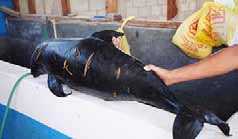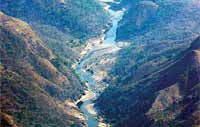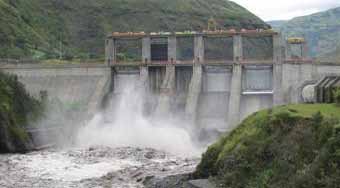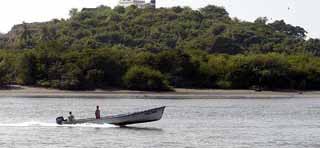Upper Gulf of California, Mexico - The Mexican federal government’s program aimed at getting small-scale fishermen of the Upper Gulf of California to adopt selective fishing nets that protect turtles and the rare Vaquita porpoise, is failing.
The failure is twofold. Not only are the efforts of fishing engineers and conservationists concerned about reducing the incidental bycatch of endangered species like the Vaquita Porpoise floundering, but local fishermen are also struggling against the tide because of reduced catches of both fish and shellfish each year.
The selective fishing net RS-INE-MX, known to the fishermen of the Upper Gulf as the chango, resembles a small trawl net with a funnel at the end through which a Vaquita Porpoise could escape, avoiding death by drowning. Vaquitas are mammals and must breathe air.
Sea turtles, which feed underwater, can also escape through the net’s opening, and reach the surface to breathe.
Up to this point, the idea is good: the net avoids the trapping and killing of the Vaquita, which represents a break for this decimated species endemic to the region. It is estimated that only 250 individuals remain, a number which places the species on the brink of extinction.
“We save the Vaquita Porpoise…but what about us?” complains fisherman Juan Ocegueda of the fishing town Golfo de Santa Clara.
He is one of the forty fishermen of this fishing community who joined the Technology Retraining Program a year ago to change the use of the traditional gillnet, in which Vaquita Porpoises have been trapped and killed for years.
The fishermen supported the program and signed an agreement with the National Commission of Protected Natural Areas (CONANP), which is responsible for protecting the Upper Gulf of California and Colorado River Delta Biosphere Reserve, within which the fisherman of Golfo de Santa Clara work daily.
The defense of mangroves and other natural resources, just like the opposition to the unstoppable surrender of coastal areas to large investors, puts the lives of environmental activists at risk, according to nearly 120 organizations from some 20 countries.
MAPDER (The Mexican Movement of Those Affected by Dams, in English) is taking a leading role in the protest, demanding that human rights be respected, and that the rule of law and international norms in the construction of dams be observed. Death threats must be stopped. The group further demands preliminary public meetings with communities that are expected to be displaced by the dams.
More than 100 organizations, representing all of Mexico’s federal entities, are opposed to the federal government’s plans to build the hydroelectric dam Las Cruces in the state of Nayarit. No consideration has been given to the dam’s effects on the rivers, flora and fauna, nor to the rights of the people situated there.
The activists have received death threats. This extreme situation was made public last July in a statement sent to: President FelipeThe National Wetlands Reserve comprises 436 square miles of mangroves and estuaries, which account for 20 percent of the country’s mangroves, the most extensive site on the Pacific coast.
Fourteen species of native flora are at risk (endemics that are threatened or in danger of extinction). The region’s fauna (mammals, birds, reptiles and amphibians) include 99 endemics of which 73 species are threatened or in danger of extinction.
On February 28 and March 1, 2009, the International Mangrove Network convened a meeting in Zihuatanejo of members of environmental organizations who have pledged to “promote conservation, protection, defense, legislation and sustainable management of the mangroves and other coastal ecosystems, while guaranteeing the respect for human rights.”
The Network placed emphasis on supporting public demands, made by civil organizations in Nayarit and by Greenpeace Mexico, to the local, state, and federal governments regarding the problems and risks imposed to the National Wetlands (a natural protected area) by the creation of the Pacific Coast Integrally Planned Center in Teacapán (Sinaloa). The project currently lacks the relevant environmental permits.
The National Wetlands consist of an extensive complex of brackish coastal lagoons, mangroves, mudflats, swamps and streams. They are found mainly in the areas of Las Cabras, Teacapán, Agua Brava, Experts estimate that no more than 250 individuals of the Vaquita Porpoise remain. (Photo: Jesús Camacho)
Experts estimate that no more than 250 individuals of the Vaquita Porpoise remain. (Photo: Jesús Camacho)“They promised us a net with which we could make a living, but with this net we couldn’t catch even a single kilo of shrimp,” Ocegueda complained.
The ecological net, the local fishermen say, does not work for catching shrimp, the major species fished in the region; what’s more, using the net means higher fuel costs because for it to function properly, it has to be towed by the fishing boats to filter water, in contrast to the traditional gillnet which uses ocean currents to trap fish and shrimp.
Beginning with the shrimp season which starts in September, the fishermen of Golfo de Santa Clara have said they will go back to using traditional nets, again increasing the likelihood that Vaquita Porpoises will be trapped during fishing activities in the Upper Gulf of California.


